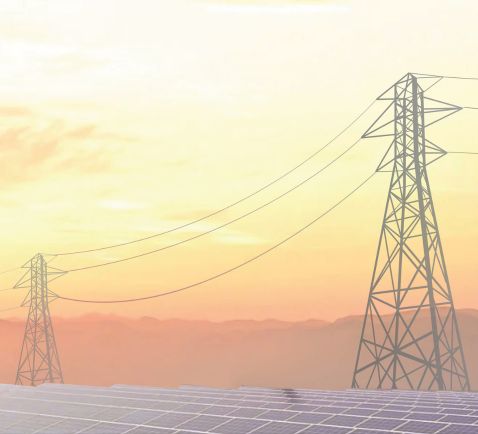Land transmission

Land transmission: enhancing grid resilience
National high-voltage power transmission grids need to be able to incorporate a growing number of renewable energy sources while keeping lines reliable and safe. At Nexans, we have been developing national networks across Europe—for instance implementing 90% of France’s and Belgium’s grids—for over a century.
Challenges associated with land transmission
Europe is aiming to become the first carbon-neutral continent. To that end, the European Union has prepared a 10-year Network Development Plan that sets targets for Member States, in particular as regards strengthening national grid infrastructure, improving network efficiency and building cross-border capacity.
Transmission system operators (TSOs) are accordingly reinforcing and modernizing national grids while factoring in environmental considerations and the requirements in European directives on electricity connections between neighboring countries. They are building more robust systems to handle increasing power production onshore and offshore, and to integrate renewable energies more efficiently. By doing this, they are helping to build a more solid Europewide grid.
Stability and reliability are major issues for national grids. And high-voltage underground and overhead land transmission lines make up a large portion of these grids. Ensuring a steady supply of energy involves anticipating failures and avoiding costly shutdowns, as well as responding fast when a problem occurs. It also involves meeting the growing need for high-capacity transmission with minimum losses, and managing cross-border transmission between national grids.
Grids need to be more resilient and flexible to absorb larger amounts of energy without a glitch. More reliable and modern transmission infrastructure, extended high-voltage networks and additional lines to interconnect countries and continents are all part of the answer.
At Nexans, we work side by side with utilities and TSOs, and have solutions to tackle the challenges facing the sector. We revamp networks, and make them more reliable and smarter, to increase transmission capacity with solutions involving both underground and overhead cables.
Europe
110 TWh
of reduced energy consumption per year could be saved through investments in better connectivity between nations
Europe
55 M
tons of CO₂ emissions could be reduced annually by 2040 through investments in better connectivity between nations
70%
the reduction in electricity transfer downtime using Nexans services
Nexans solutions
- The full set of skills associated with land infrastructure.
- Tighten grid monitoring to ensure safe and seamless operation.
- Detect anomalies and anticipate failures.
- Reduce the risks associated with deploying land transmission systems, by using the safest overhead and underground solutions (tested and implemented in-house).
- Respond fast when a problem occurs.
- Harness artificial intelligence in asset management software and advanced network-surveillance and failure-detection systems to enhance resilience.
- Develop a complete range of cables and accessories for overhead and underground lines, with built-in superconductivity and other pioneering technologies.
- Team up with our customers as soon as they start thinking about a new project; in particular carry out preliminary studies, simulations and tests.
- Constantly provide training, which is essential to keep our employees and subcontractor employees safe on high-voltage projects. Our HV center in Calais, which was set up in 2006, is tasked with training everyone working on 60 kV to 525 kV systems.
The transmission landscape is changing in several ways. First, there is a need to accommodate a forecast rise in electricity demand of more than 40% over the next 20 years. Transmission System Operators (TSOs) need new and upgraded infrastructure to achieve this.
, Nexans
Our objectives
- Deliver actionable solutions to the issues STOs are facing.
- Increase grid resilience.
- Implement effective risk management.
- Contribute to sustainable projects, reduce the visual impact of electrical installations.
- Build solid partnerships.
- Show dedication to customers on a local and global level.
- Protect employee health and safety in the field.
Protecting land cables with Nexans IMR
Major electricity transfer lines can experience year-long outages without a contingency plan, leading to economic losses and delays in sourcing experts for repairs. Nexans offers expertise, dedicated personnel, and assets to address such unforeseen challenges.
With Nexans Inspection, Maintenance and Repair (IMR) agreements, cable failure risks are minimized through proactive inspection and maintenance, reducing response times to incidents. Nexans has a proven track record in cable repairs globally, including in Asia, Africa, Europe, and the North Sea region, with over 40 years of experience and successful installations of over 50 offshore repair joints under harsh weather conditions.








